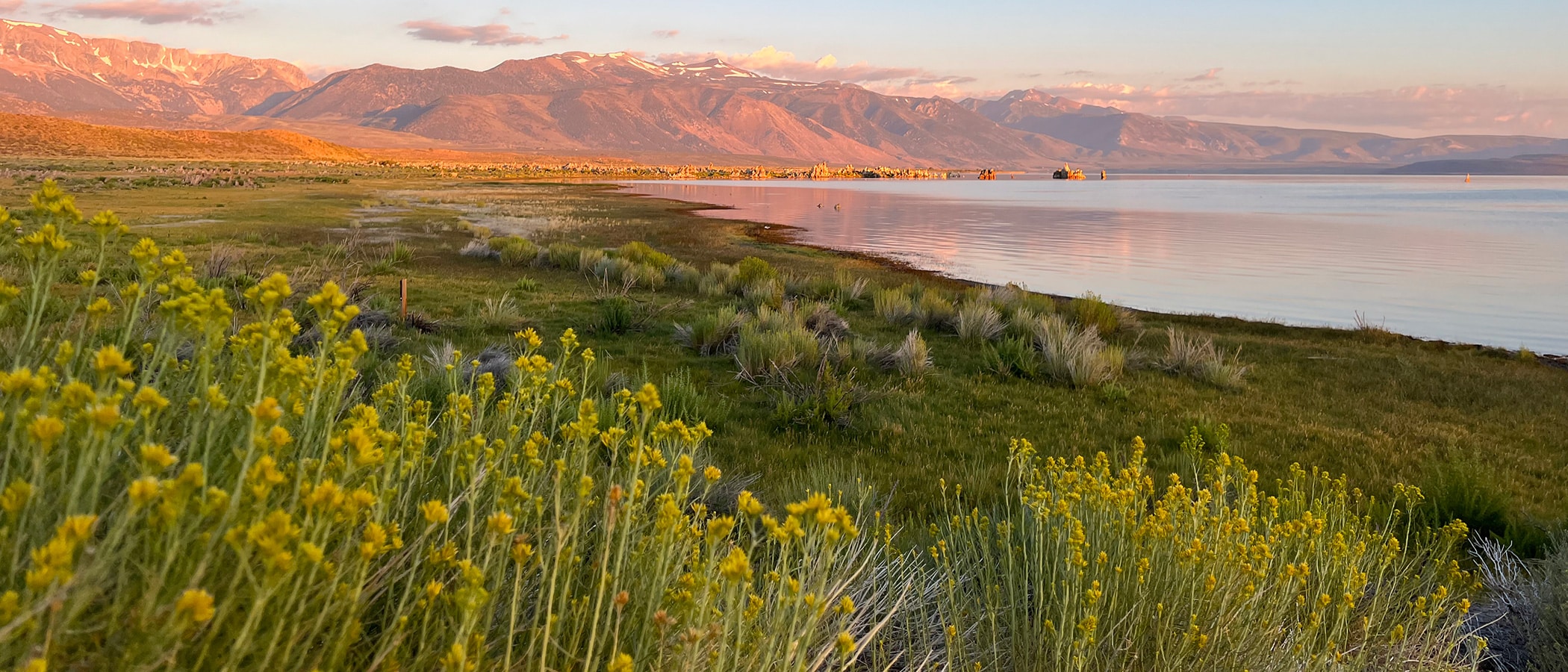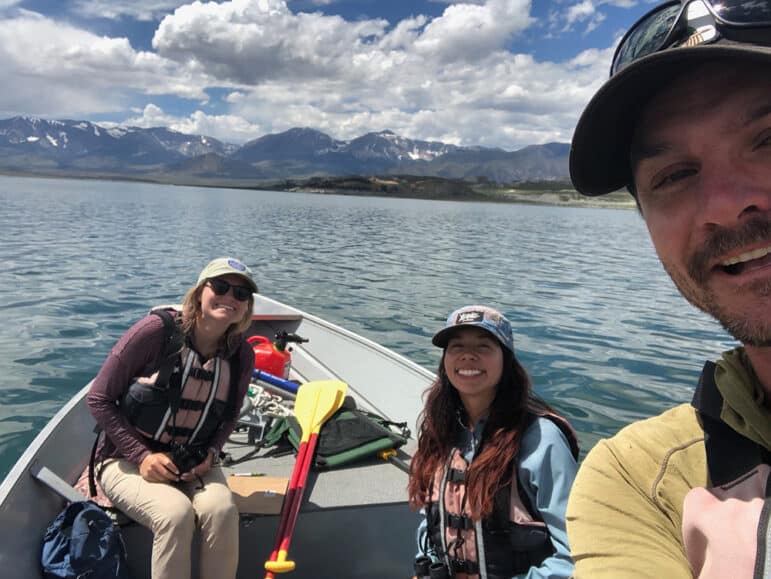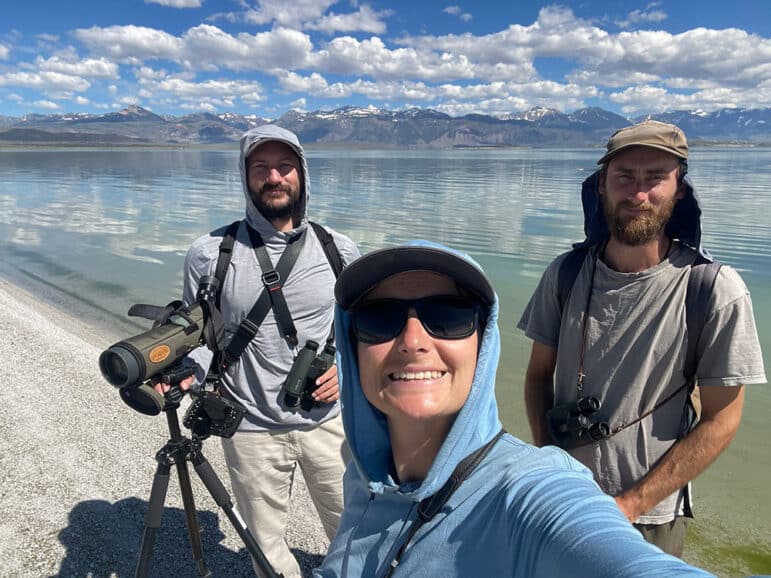
On August 19, 2023, the Mono Lake Committee partnered with Oikonos Ecosystem Knowledge, the Eastern Sierra Audubon Society, and Point Blue Conservation Science to conduct the third lake-wide shorebird survey of Mono Lake. This survey is part of the much larger Migratory Shorebird Project, which includes hundreds of lakes across the globe. Here at Mono Lake, 22 participants circumnavigated all 45 miles of shoreline. Throughout the day we counted more than 21,212 individual shorebirds and identified 16 species (see below for the tally).


Shorebird survey participants covered all 45 miles of Mono Lake’s shoreline and counted more than 21,000 birds. Photos by Ryan Carle and Nora Livingston.

This count posed a unique (but welcomed) problem due to Mono Lake’s dramatic rise this year. With our record-breaking winter, Mono Lake rose 4.74 vertical feet, and the rising lake swallowed the shorelines that are normally easily (but muddily) navigable. Instead of walking on beaches, many volunteers had to work through thick marsh, spiky willows, and gushing springs and streams. Despite these challenges, the volunteers combined to count a record number of Red-necked Phalaropes at Mono Lake, a real highlight of the count.
Mono Lake is a vital part of the larger bird migration picture called the Pacific Flyway. Migratory birds feed on Mono Lake’s abundant brine shrimp and alkali flies to fuel them on their journey to their wintering grounds thousands of miles away. Because large numbers of shorebirds, gulls, and grebes depend on the lake, Mono Lake was designated as a part of the Western Hemisphere Shorebird Reserve Network (WHSRN). WHSRN is a collection of critical migratory bird habitats in North and South America. Inland lakes like Mono Lake are rare and increasingly threatened by drought, water diversions, and climate change, making the protection of this migratory staging site crucial for several bird species’ survival.
We hope to continue having these lake-wide surveys every spring and fall for several years to improve our understanding of how shorebirds use Mono Lake. Contact Lead Naturalist Guide Nora Livingston by email or at (760) 647-6595 x135 for more information about how to be involved.
Species list and rough tally
| American Avocet | 825 |
| Black Bellied Plover | 1 |
| Greater Yellowlegs | 2 |
| Killdeer | 60 |
| Long-billed Curlew | 37 |
| Least Sandpiper | 403 |
| Marbled Godwit | 1 |
| Peep spp. | 242 |
| Red-necked Phalarope | 18411 |
| Short-billed Dowitcher | 1 |
| Semipalmated Plover | 2 |
| Snowy Plover | 58 |
| Spotted Sandpiper | 18 |
| Western Sandpiper | 67 |
| Willet | 3 |
| Wilson’s Phalarope | 778 |
| Dowitcher spp. | 2 |
| Phalarope spp. | 300 |
| Baird’s Sandpiper | 1 |
| Total | 21212 |
Top photo by Fiona Travers.
